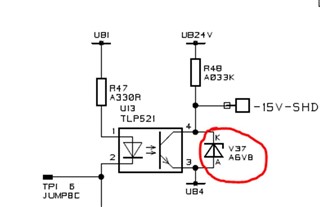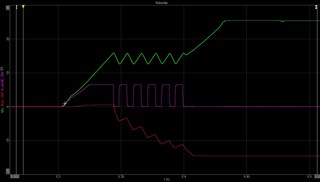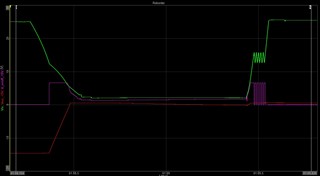Good day, colleagues,
My customer has the following problem:
We have the Simple Step-Down Voltage Regulator type TL2575HV-151N in use on an old module.
Due to failures at the customer, we have noticed that the TL2575... sporadically does not start, although the signal ON/OFF is pulled down to 0.3V by our controller. According to the data sheet, a voltage less than or equal to 0.8V should be sufficient to switch on the switching regulator safely.
The controller is operated as an inverse converter according to the following circuit diagram:

It is controlled by an optocoupler according to the following circuit diagram, since the reference ground of the ON/OFF signal is the floating -15V:

The ON/OFF signal is clamped by means of a Z-diode to 6.8V related to the generated -15V.
Can you help us understand what exactly is going on in the event of a fault? These failures are sporadic, usually starting at 60°C ambient temperature. Maximum ambient temperature is 70°C.
The connected load (at -15V) is 160 mA.
The -15V are generated from +24V.
In the recording you can see the voltage at the ON/OFF pin of the switching regulator TL2575.....
The regulator was in operation: voltage at ON/OFF pin at 70 mV.
Afterwards it was switched off: Voltage at ON/OFF pin at 7.5 V.
After that it was switched on but with some jittering. But after jittering, 55 mV are permanently present.
However, the switching regulator does not switch on.
However, we make this observation very sporadically, i.e. less than one in a hundred switching regulators behaves like this.
The x-axis is scaled with 200 ms/div.

Thank you,
Daria




